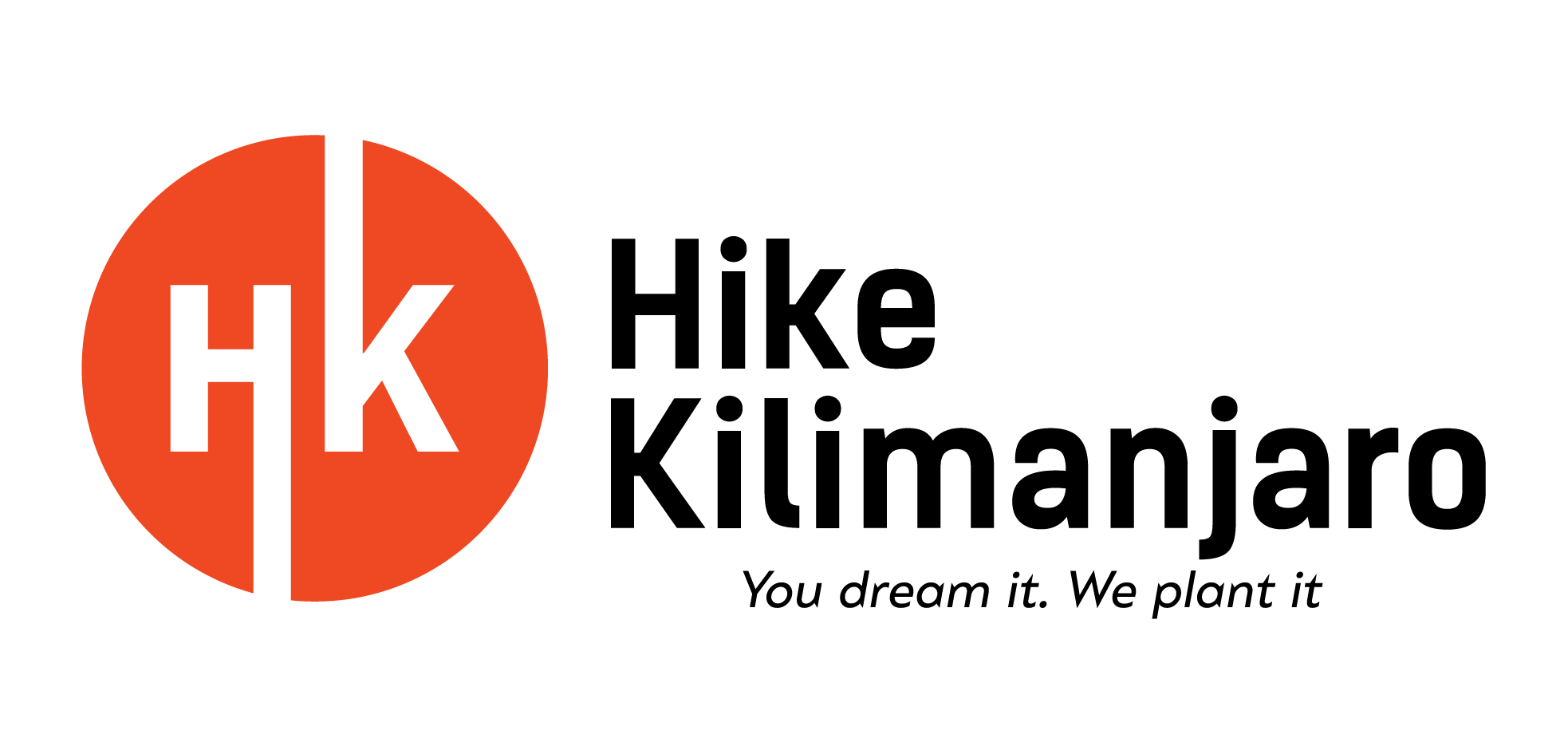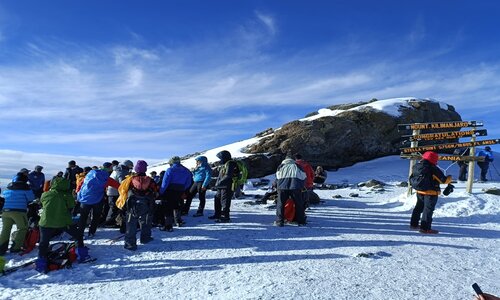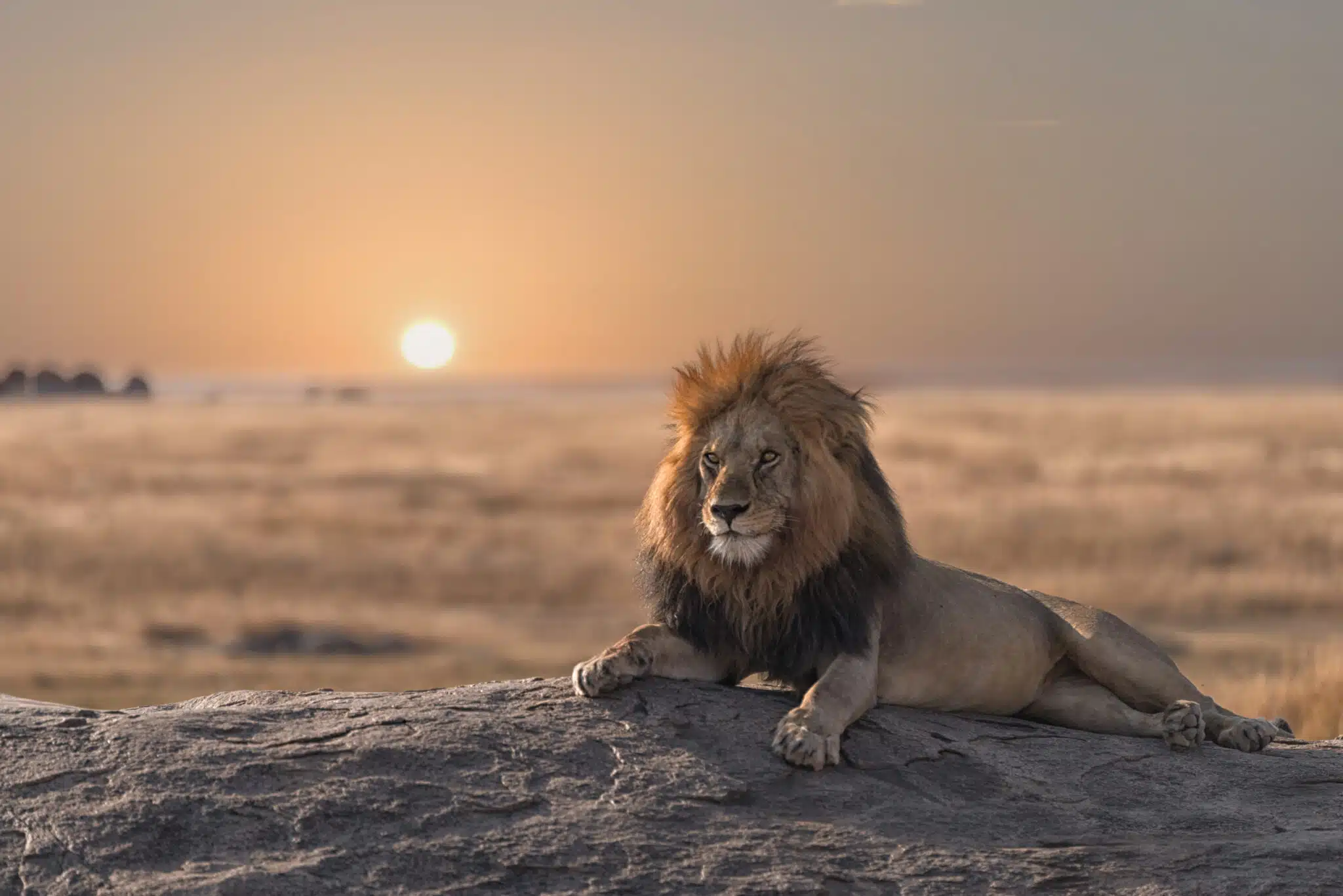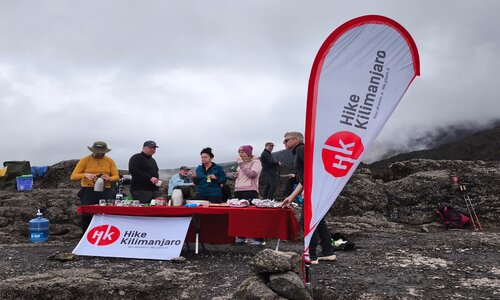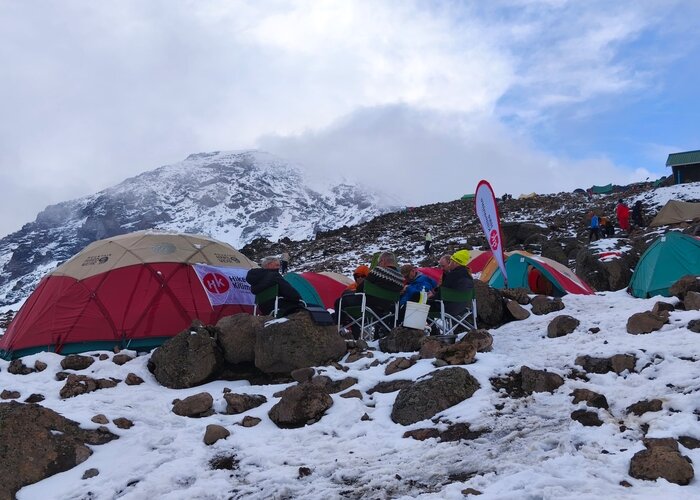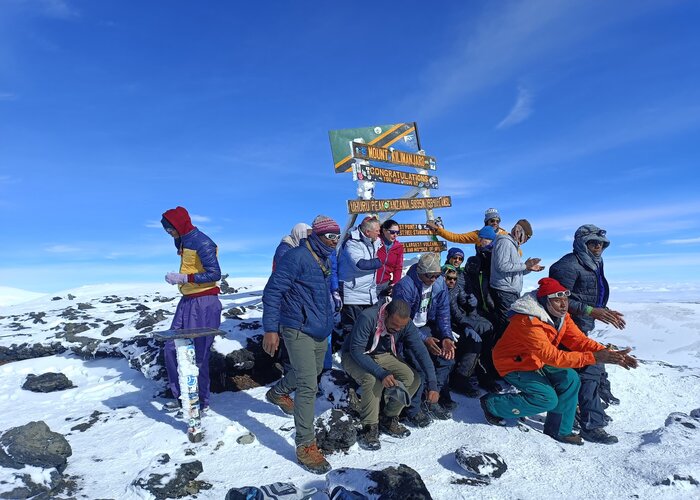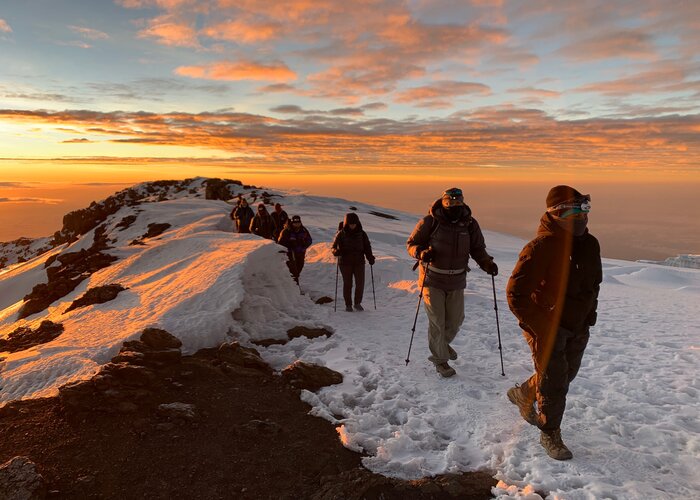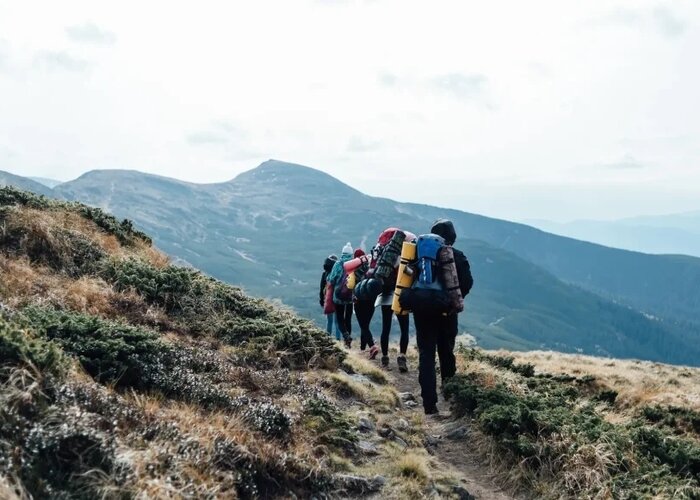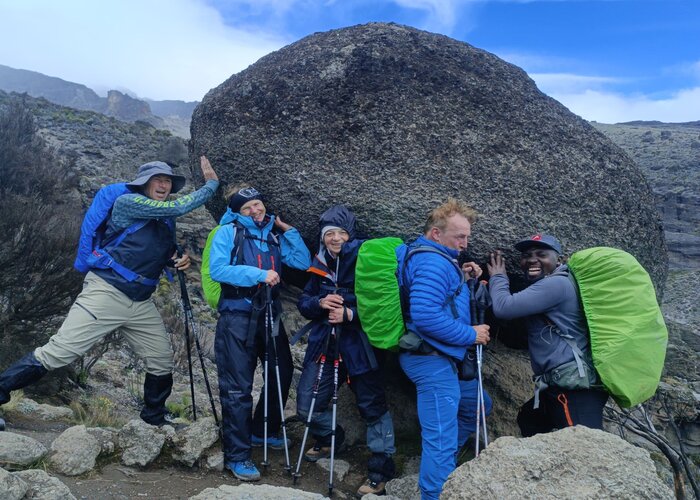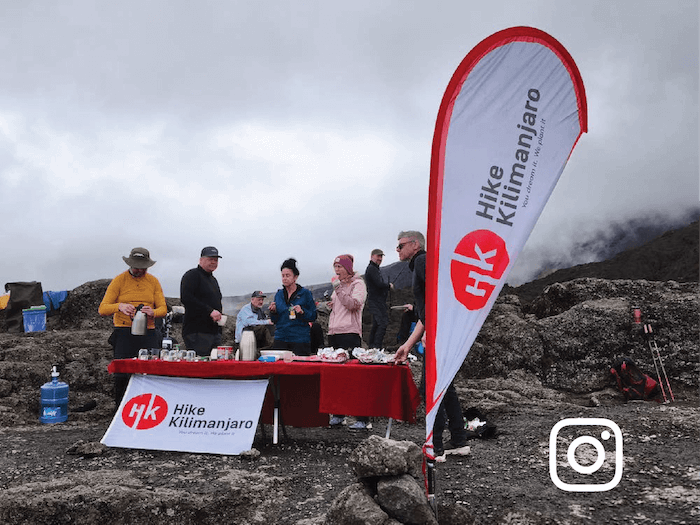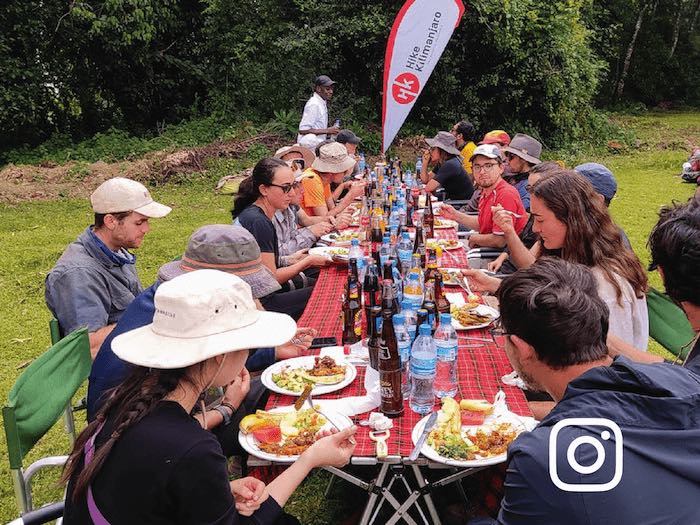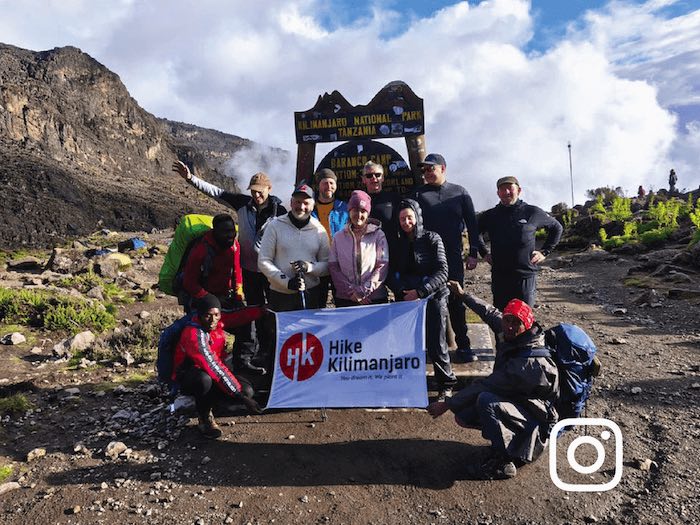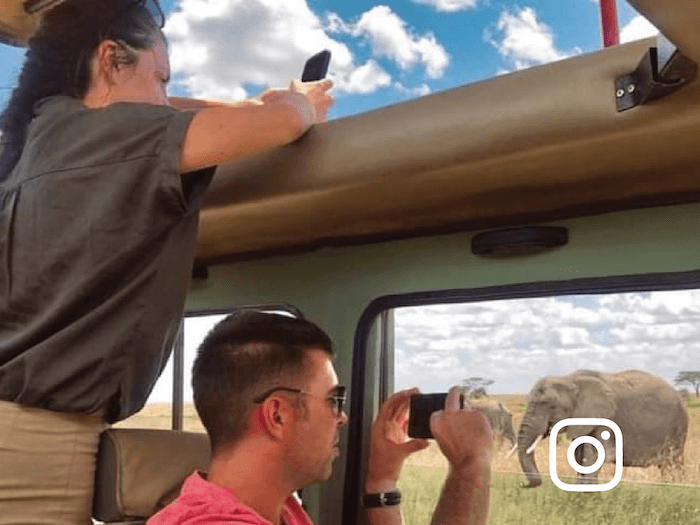
Everything You Needs to Know
Climbing Kilimanjaro Guide
Climbing Kilimanjaro Guide: Everything You Need to Know for a Safe and Successful Summit.
Plan your Kilimanjaro climb like a pro with our ultimate Climbing Kilimanjaro Guide. Get expert tips, best routes, packing lists, training advice, and altitude safety for a successful summit
Mount Kilimanjaro stands majestically at 5,895 meters (19,341 feet) above sea level, making it the world’s highest free-standing mountain and the iconic Roof of Africa. Located in Tanzania, this snow-capped volcanic giant attracts adventurers from all over the globe, with over 40,000 climbers attempting the summit each year.
Unlike many other high-altitude treks, climbing Kilimanjaro does not require technical mountaineering skills. With the right preparation, anyone with a moderate fitness level can achieve the summit. It’s one of the few peaks of this stature accessible to non-climbers, making it a dream destination for nature lovers, adventure seekers, and bucket-list travelers.
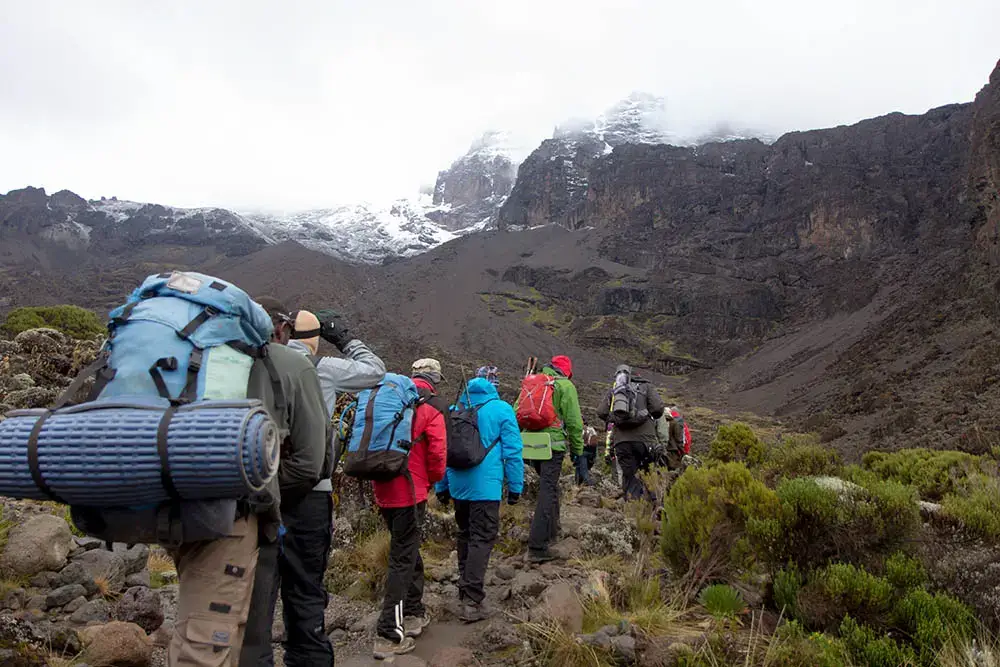
Frequently Asked Questions About Climbing Kilimanjaro
Whether you’re preparing for your summit attempt or researching the best time to go, here are the most commonly asked questions about trekking Africa’s highest peak, based on our 11+ years of guiding experience and feedback from over 20,000 successful climbers.
How many days does it take to climb Kilimanjaro?
The number of days it takes to climb Mount Kilimanjaro depends on the route chosen and the acclimatization schedule. The Marangu Route typically takes 5 to 6 days and is considered moderate in difficulty but offers limited acclimatization. The Machame Route requires 6 to 7 days and is rated moderate to challenging, with good acclimatization opportunities. The Lemosho Route usually takes 7 to 8 or more days and provides excellent acclimatization with a moderate difficulty level. The Rongai Route takes about 6 to 7 days and is moderately difficult with moderate acclimatization. The Northern Circuit is the longest, taking 8 to 9 days, and is considered challenging but offers the best acclimatization on the mountain.
Choosing a route with at least 7 days is highly recommended to significantly increase your summit success rate and minimize the risk of altitude sickness.
Is It Hard to Climb Mount Kilimanjaro?
Climbing Kilimanjaro is challenging, but achievable. It is the highest walkable mountain in the world, requiring no ropes or technical skills. However, altitude is the biggest hurdle.
Here’s what determines the difficulty:
- Altitude gain and lack of oxygen above 3,000m
- Physical stamina for long trekking days
- Mental resilience, especially during summit night
- Weather conditions, which can vary drastically
With the right preparation, a slow pace, and experienced guides, even first-time hikers can reach the summit.
At Hike Kilimanjaro, our trained mountain teams, oxygen monitoring, and personalized pacing plans help climbers overcome these challenges safely.
6-9 days
Kilimanjaro Hike Lengths
$2,900
Average Climb Cost
94%
Kilimanjaro Success Rate
What Should I Pack for Climbing Kilimanjaro?
Packing the right gear is crucial for safety and comfort. Key items include:
- Layered clothing (base, insulation, waterproof)
- Sturdy hiking boots
- Sleeping bag (rated -10°C/14°F or lower)
- Headlamp
- Water bottles/hydration bladder
- Trekking poles
- Sun protection (sunglasses, SPF, lip balm)
- Personal first aid kit
We provide a detailed packing list for all our clients and offer high-quality gear rentals in Arusha.
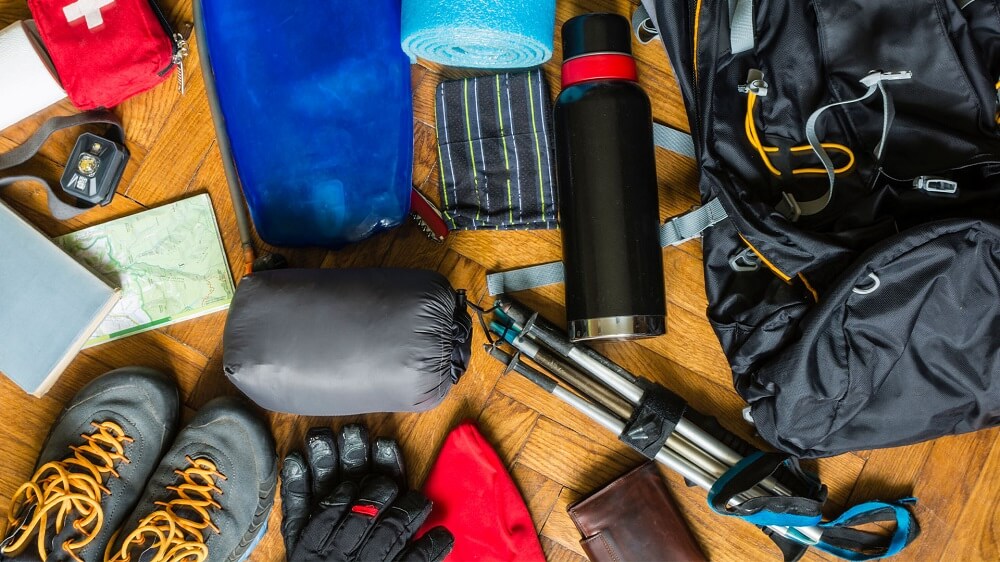
What to pack for Kilimanjaro?
This free Kilimanjaro Packing List describes the gear required for a hike
Can a Beginner Climb Mount Kilimanjaro?
Yes, Mount Kilimanjaro is accessible to beginners with no prior trekking experience. Unlike other high-altitude climbs, Kilimanjaro does not require technical mountaineering skills, making it an achievable goal for those new to hiking. The primary challenge lies in the altitude, which can affect anyone regardless of fitness level. Therefore, proper acclimatization is crucial. Opting for a 7–8-day route, such as the Lemosho or Machame, allows your body to adjust gradually, increasing your chances of a successful summit.
Preparation is key. Engaging in regular cardiovascular exercises, such as hiking, jogging, or cycling, can build the stamina needed for the trek. Additionally, selecting a reputable tour operator ensures that you receive proper guidance, support, and safety measures throughout the journey.
For a firsthand account of the experience, consider reading “What I Wish I Knew Before Climbing Kilimanjaro” by Georgia Fowkes. In her article, Georgia shares valuable insights and tips from her climb via the Lemosho route, emphasising the importance of preparation and choosing the right itinerary.
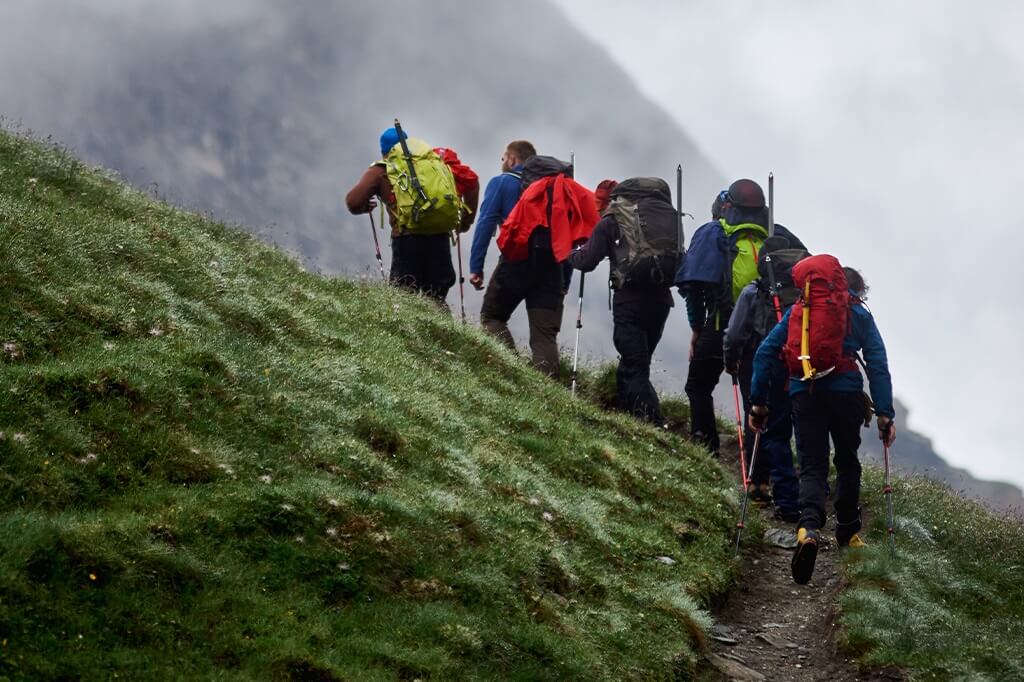
When Is the Best Time to Climb Kilimanjaro?
Kilimanjaro can be climbed year-round, but two main trekking seasons offer the most favorable conditions:
- January to March: Quieter trails, colder summit temps, great visibility
- June to October: Peak season with dry conditions, clear skies, and warmer daytime temps
Avoid the long rains (April–May) and short rains (November), unless you prefer solitude and don’t mind slippery trails.
Pro Tip: Book 4–6 months in advance to secure the best guides, routes, and summit dates.
How Much Does It Cost to Climb Kilimanjaro?
The cost of a Kilimanjaro climb depends on several factors: route, group size, number of days, and quality of service.
Here’s a general breakdown:
- Budget climb: $1,500–$2,000 (basic gear, fewer safety measures)
- Mid-range tour: $2,000–$3,500 (standard tents, certified guides, better meals)
- Premium trek: $3,500–$5,000+ (high-end camping, oxygen, medical checks, private toilets)
At Hike Kilimanjaro, we offer exceptional value without cutting corners:
- Expert local guides
- Ethical porter treatment
- Top-quality gear and meals
- Comprehensive safety protocols
Key Moments On Mount Kilimanjaro
How Should I Train for Climbing Kilimanjaro?
Achieving a successful and enjoyable Kilimanjaro climb requires a moderate level of fitness. Ideally, you should be comfortable running 5 km (3 miles) without difficulty and capable of hiking 10 km (6+ miles) in a day. Engaging in regular cardiovascular exercises such as swimming, cycling, running, and hiking will build the necessary endurance.
Incorporating strength training, particularly focusing on the legs, core, and back, will prepare your muscles for the demands of the trek. Flexibility and balance exercises, including stretching and yoga, can also be beneficial.
To simulate the conditions of the climb, practice hiking on varied terrain while carrying a daypack. This will help your body adapt to the physical requirements and improve your overall readiness.
For a comprehensive guide, refer to our Kilimanjaro training plan, which outlines a detailed schedule to prepare you for the ascent.
What Are the Dangers of Climbing Kilimanjaro?
Climbing Mount Kilimanjaro is a remarkable adventure, but it’s essential to be aware of potential risks. The most significant danger is acute mountain sickness (AMS), resulting from rapid ascent without proper acclimatization. In severe cases, AMS can escalate to high-altitude pulmonary edema (HAPE) or high-altitude cerebral edema (HACE), both life-threatening conditions.
Annually, approximately 10 to 15 climbers succumb to altitude-related illnesses on Kilimanjaro. The mortality rate among tourists is about 0.02%, with pulmonary edema accounting for 76% of fatalities.
Fortunately, AMS is preventable. Opting for a seven-day or longer itinerary allows your body to adjust gradually to the altitude. Staying hydrated, maintaining a slow and steady pace, and choosing experienced guides trained in altitude sickness management are crucial. Certified Wilderness First Responders are equipped to handle emergencies and coordinate evacuations if necessary.
For a comprehensive understanding of mortality statistics on the mountain, refer to our article on Mount Kilimanjaro death statistics.
Additionally, our guide on acclimatization on Kilimanjaro offers detailed strategies to help you prepare for the altitude and ensure a safer climb.
Expert Opinion
Mount Kilimanjaro stands as one of the most accessible high-altitude summits globally, attracting both seasoned trekkers and first-time climbers. Its non-technical routes mean that no specialized climbing skills are required, making it an appealing challenge for beginners. However, it’s essential to approach this expedition with respect and preparation.
At 5,895 meters (19,341 feet), Kilimanjaro’s altitude poses significant risks. The primary concern is acute mountain sickness (AMS), which can escalate to severe conditions like high-altitude pulmonary edema (HAPE) or cerebral edema (HACE) if not addressed promptly. These conditions are life-threatening and are the leading causes of fatalities on the mountain. Statistics indicate that approximately 10 to 15 climbers succumb to altitude-related illnesses on Kilimanjaro each year .
A critical factor contributing to these incidents is the choice of tour operator. Opting for low-cost providers can be perilous, as they may compromise on essential safety measures. Such operators might employ underqualified guides lacking proper training in first aid and emergency response. Additionally, they may use substandard equipment, further increasing the risk to climbers.
To ensure a safe and successful ascent, it’s imperative to select a reputable outfitter. Experienced operators prioritize climber safety by employing certified guides trained in altitude sickness recognition and emergency procedures. They also ensure the use of high-quality equipment and maintain protocols for proper acclimatization.
In summary, while Kilimanjaro is attainable for beginners, it’s vital not to underestimate the mountain. Proper preparation, awareness of altitude risks, and choosing a trustworthy tour operator are essential steps to mitigate dangers and enhance the overall climbing experience.
Mount Kilimanjaro Itinerary
This package includes a seven-day climb of Mount Kilimanjaro, offering an unforgettable trekking adventure to Africa’s highest peak.
After your summit, relax and recharge with a two or three day safari through the breathtaking landscapes of Tarangire and Ngorongoro National Parks home to some of the most iconic wildlife in Africa.
This well-rounded itinerary also includes arrival and departure days, plus a rest day to help you acclimate or recover, making it the perfect way to experience Tanzania’s top highlights in one seamless journey.
This comprehensive itinerary is ideal for experiencing all of Tanzania’s top attractions and includes days for arrival and departure, as well as a rest day.
What Does “Kilimanjaro” Mean?
The name “Kilimanjaro” has uncertain origins, with several theories rooted in the region’s linguistic and cultural history. A widely accepted interpretation combines the Swahili word kilima, meaning “hill” or “mountain,” with the ancient Swahili term njaro, which once meant “whiteness.” This suggests the translation “Mountain of Whiteness” or “Shining Mountain,” likely referencing the snow-capped peak visible from great distances .
Another theory posits that njaro derives from the Chagga language, where it could mean “greatness,” leading to the interpretation “Mountain of Greatness.” This aligns with the mountain’s majestic presence and significance in the region .
Additionally, some scholars suggest that jaro might relate to the Swahili word for “caravans,” implying “Mountain of Caravans,” as Kilimanjaro served as a landmark for trade caravans traversing the area .
The Chagga people, indigenous to the slopes of Kilimanjaro, traditionally refer to the mountain’s two main peaks separately: Kibo, meaning “spotted,” likely due to the contrast of snow and rock, and Mawenzi, meaning “broken” or “notched,” describing its jagged appearance .
While the exact etymology remains debated, these interpretations reflect the mountain’s prominent features and its cultural significance to the communities that surround it.
For a more in-depth exploration of the name’s origins and meanings, you can read our detailed article on the meaning of “Kilimanjaro.”
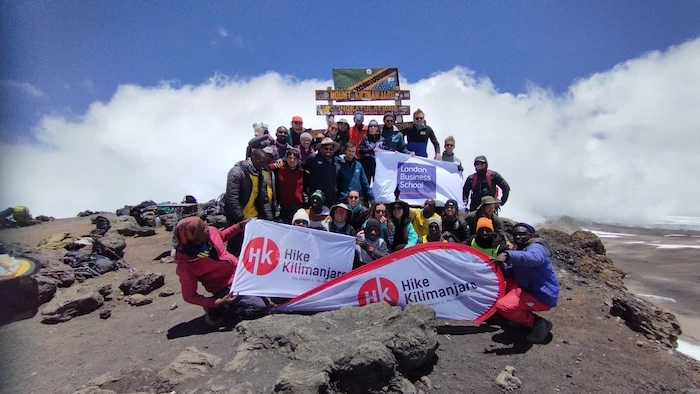
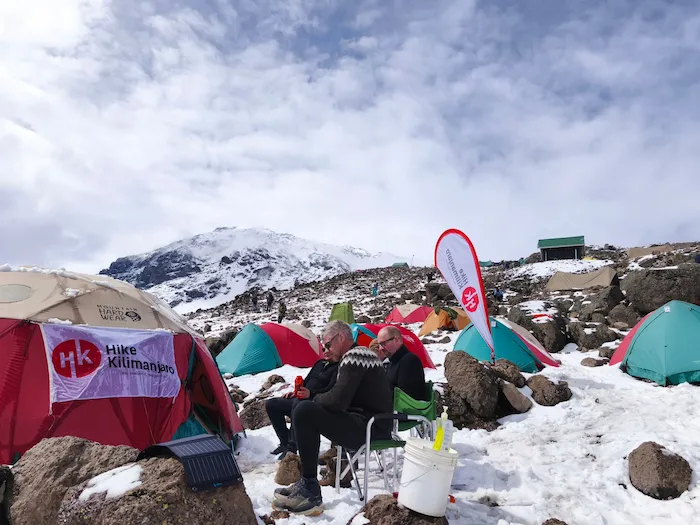
When Will Kilimanjaro’s Glaciers Disappear?
The glaciers atop Mount Kilimanjaro are retreating at an alarming rate due to climate change. According to the World Meteorological Organization and the African Union, these iconic ice formations are projected to vanish entirely by 2040 . Other studies suggest a slightly extended timeline, estimating complete disappearance by 2050 .
The Furtwängler Glacier, one of the most prominent remnants, has been shrinking rapidly, serving as a stark indicator of the environmental changes impacting the region. The loss of these glaciers not only alters the mountain’s appearance but also affects local ecosystems and water sources.
Who Was the First Person to Climb Mount Kilimanjaro?
The first recorded successful ascent of Mount Kilimanjaro was achieved on October 6, 1889, by German geographer Hans Meyer and Austrian mountaineer Ludwig Purtscheller. Accompanied by local guide Yohani Kinyala Lauwo, their expedition overcame extreme conditions to reach the summit, paving the way for future climbers .
Their journey was not without challenges; Meyer had made two previous attempts, both unsuccessful due to inadequate equipment and harsh weather conditions. The successful third attempt involved meticulous planning, including establishing multiple camps and ensuring sufficient supplies. This historic climb remains a testament to human determination and the spirit of exploration.
For those interested in experiencing Kilimanjaro’s grandeur, it’s essential to be aware of both its environmental significance and its place in mountaineering history. As the glaciers continue to recede, the opportunity to witness them diminishes, adding urgency to conservation efforts and responsible tourism.
If you have further questions or need assistance planning your Kilimanjaro adventure, feel free to ask!
Where Is Mount Kilimanjaro Located?
Mount Kilimanjaro is situated in northern Tanzania, East Africa, just south of the equator. It lies near the border with Kenya, but all official climbing routes and trailheads are located within Tanzania. The mountain is encompassed by Kilimanjaro National Park, a UNESCO World Heritage Site covering approximately 1,688 square kilometers.
The closest major town to Mount Kilimanjaro is Moshi, located about 45 kilometers (28 miles) south of the mountain. Moshi serves as the primary base for climbers, offering various accommodations and services tailored to trekking expeditions.
How Do I Get to Mount Kilimanjaro?
The most convenient way to reach Mount Kilimanjaro is by flying into Kilimanjaro International Airport (JRO), which is approximately 46 kilometers (28 miles) from Arusha or Moshi. Several international airlines, including Turkish Airlines, Qatar Airways, KLM, Ethiopian Airlines, and Air France, operate flights to JRO.
From the airport, you can reach Arusha or Moshi via:
- Private Transfer or Taxi: A direct drive taking about 45 minutes.
- Shuttle Services: Companies like Zanzibar Tours & Airport Transfers offer shuttle services to Arusha or Moshi, with tickets costing around $30 and a journey time of approximately 60 minutes.
Alternatively, you can fly into Dar es Salaam and take a domestic flight to Kilimanjaro, though this may involve additional costs for domestic flights and baggage fees. Another budget-friendly option is to fly into Nairobi, Kenya, and take a bus to Arusha or Moshi. However, this route requires a Kenyan transit visa (approximately $21) and a bus transfer (around $45), with a total journey time of about seven hours.
How Tall Is Mount Kilimanjaro?
Mount Kilimanjaro’s summit, known as Uhuru Peak, stands at 5,895 meters (19,341 feet) above sea level, making it the highest point in Africa and the tallest free-standing mountain in the world.
Climbers typically begin their ascent from trailheads situated at elevations ranging from 1,600 to 2,000 meters (5,250 to 6,560 feet). Due to its significant elevation, Mount Kilimanjaro is one of the few places in equatorial Africa where snow is present year-round.
If you have any more questions or need assistance planning your Kilimanjaro adventure, feel free to ask!
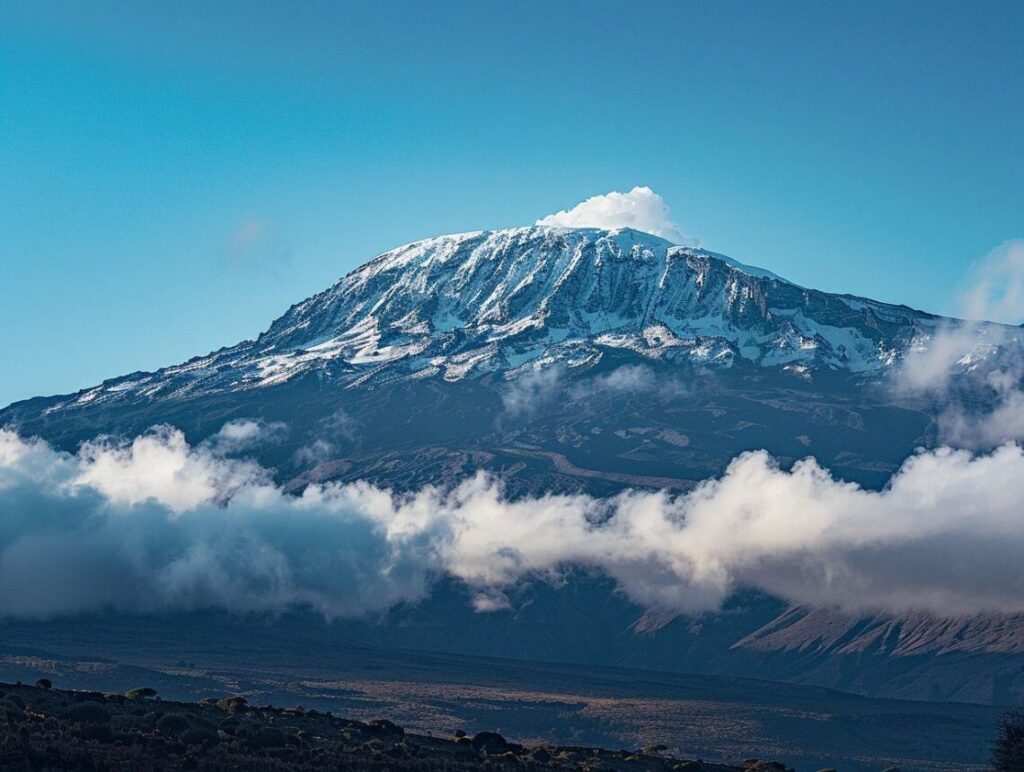
Why Is the Summit of Kilimanjaro Called Uhuru Peak?
The highest point of Mount Kilimanjaro is known as Uhuru Peak, a name rich in historical significance. “Uhuru” means “freedom” in Swahili. The peak was named in 1961 to commemorate Tanganyika’s (now part of Tanzania) independence from British colonial rule. This renaming symbolized the nation’s newfound freedom and has since remained a proud emblem of Tanzanian heritage.
When Are the Rainy and Dry Seasons in Tanzania?
Tanzania experiences two main rainy seasons and two dry seasons annually:
- Short Rains (Vuli): Typically occur from late October to December.
- Long Rains (Masika): Occur from March to May.
- Dry Seasons:
- January to February: A brief dry period following the short rains.
- June to October: The main dry season, characterized by minimal rainfall and lower humidity.
These seasonal patterns can influence the best times for climbing Mount Kilimanjaro and for wildlife viewing in Tanzania’s national parks.
Kilimanjaro Trekking Routes
Other questions about Mt. Kilimanjaro
Can you recommend a reliable travel insurance?
When planning a high-altitude trek like Mount Kilimanjaro, securing comprehensive travel insurance is crucial. Given the risks associated with trekking up to 6,000 meters, including potential altitude sickness and the need for emergency evacuation, it’s essential to choose a policy that covers high-altitude hiking, helicopter evacuation, and medical services.
Recommended Travel Insurance Providers for Kilimanjaro Treks
1. Global Rescue
Global Rescue is renowned for its specialized services in field rescue and medical evacuation, making it a top choice for high-altitude expeditions.
- Coverage Highlights:
- Field rescue and medical evacuation services worldwide.
- No altitude restrictions, ensuring coverage up to and beyond 6,000 meters.
- Partnerships with leading medical institutions like Johns Hopkins Medicine.
- Option to add IMG Signature Travel Insurance for comprehensive trip protection.
- Considerations:
- Global Rescue operates on a membership basis, offering short-term and annual plans.
- While not a traditional insurance company, their services complement standard travel insurance policies.
For more details, visit their official website:
2. World Nomads
World Nomads offers travel insurance tailored for adventurous travelers, including those undertaking high-altitude treks.
- Coverage Highlights:
- Coverage for hiking and trekking activities, with altitude limits depending on the plan.
- Emergency medical expenses, evacuation, trip cancellation, and gear protection.
- Designed by travelers, for travelers, ensuring relevant coverage for various adventures.
- Considerations:
- It’s essential to select the appropriate plan (Standard or Explorer) based on your trekking altitude.
- Always review the policy details to ensure coverage aligns with your specific trek requirements.
Learn more at:
3. SportsCover Direct
For UK residents, SportsCover Direct provides specialized trekking and hiking insurance with options covering altitudes up to 7,000 meters.
- Coverage Highlights:
- Emergency medical expenses and repatriation up to £10 million.
- Search and rescue coverage up to £50,000.
- Personal accident and liability coverage.
- Options to cover sports equipment and trip cancellations.
- Considerations:
- Policies are tailored for UK residents; travelers from other countries should verify eligibility.
- Different coverage levels (Bronze, Silver, Gold) allow customization based on needs.
Explore their offerings here:
Key Features to Look For in High-Altitude Trekking Insurance
When selecting a travel insurance policy for Kilimanjaro or similar high-altitude treks, ensure it includes:
- High-Altitude Coverage: Confirm that the policy covers trekking activities up to at least 6,000 meters.
- Emergency Evacuation: Look for coverage that includes helicopter evacuation and medical repatriation.
- Medical Expenses: Ensure comprehensive coverage for potential medical treatments, including those related to altitude sickness.
- Trip Cancellation and Interruption: Protect your investment against unforeseen events that might disrupt your travel plans.
- Gear Protection: Coverage for lost, stolen, or damaged equipment can be beneficial.
Always read the policy details carefully and consult with the insurance provider to ensure the coverage aligns with your specific trekking plans and needs.
If you need further assistance or have specific questions about planning your Kilimanjaro adventure, feel free to ask!
Are there any tips for the best acclimatization for climbing Kilimanjaro?
Proper acclimatization is key to a successful and safe Kilimanjaro climb. Here are our top recommendations to help you adapt to the altitude and reach the summit:
Hike slowly
Your body needs time to adjust to the reduced oxygen levels at high altitude. Maintaining a slow and steady pace helps stimulate red blood cell production, which improves oxygen transport to vital organs. Our mountain guides will monitor your pace throughout the trek and make adjustments as needed to optimize your acclimatization.
Stay hydrated
Drink 3–4 liters of water per day. Proper hydration supports better blood circulation and helps your body adapt to altitude more efficiently. Our team will ensure fresh, clean water is available to you at all times along the trail.
Take part in acclimatization hikes
Each day, our guides organize short hikes from camp to higher elevations, then back down to sleep. These “climb high, sleep low” hikes usually last no more than two hours and significantly enhance your body’s adaptation to the altitude. We strongly encourage all climbers to participate.
Pre-acclimatize if possible
If your schedule allows, consider acclimatization hikes before your Kilimanjaro expedition. Climbing Mount Meru, also located in Tanzania, is an excellent option. Other high-altitude treks, like the Inca Trail in Peru or hiking peaks in your home country, can also help prepare your body for the journey.
Choose a longer route
Opt for a seven-day or longer Kilimanjaro itinerary. Routes such as Lemosho, Northern Circuit, or Machame (7 days) offer gradual elevation gains, giving your body the extra time it needs to acclimate properly. Longer routes significantly improve your chances of a safe and successful summit.
What is the Best Kilimanjaro Routes for Acclimatization
1. Northern Circuit Route (8–9 days)
The Northern Circuit is widely regarded as the premier route for acclimatization on Kilimanjaro. Spanning 8 to 9 days, it provides the longest duration on the mountain, allowing climbers ample time to adjust to increasing altitudes. The route’s design incorporates gradual elevation gains and multiple “climb high, sleep low” opportunities, which are beneficial for acclimatization. Additionally, it offers a 360-degree traverse of the mountain, exposing trekkers to diverse terrains and panoramic views. Despite its length, the Northern Circuit boasts a high summit success rate of approximately 90–95%.
2. Lemosho Route (7–8 days)
The Lemosho Route is celebrated for its scenic beauty and effective acclimatization profile. Starting from the western side of Kilimanjaro, it offers a gradual ascent through varied ecosystems, from lush rainforests to alpine deserts. Over 7 to 8 days, climbers benefit from a well-paced itinerary that includes strategic elevation gains and rest periods, facilitating better altitude adaptation. The route’s design contributes to a commendable summit success rate of around 85–90%.
3. Machame Route (7 days)
Known as the “Whiskey Route,” the Machame Route is one of the most popular paths up Kilimanjaro. Over 7 days, it offers a challenging yet rewarding trek with a favorable acclimatization profile. The route incorporates the “climb high, sleep low” principle, particularly evident during the ascent to Lava Tower followed by descent to Barranco Camp. This approach aids in altitude adjustment and contributes to a summit success rate of approximately 80–85%.
4. Rongai Route (7 days)
Approaching from the northern side, the Rongai Route is the only path that starts near the Kenyan border. It offers a more gradual ascent and is less crowded, making it suitable for those seeking solitude. While it doesn’t provide as many “climb high, sleep low” opportunities as other routes, its steady elevation gain over 7 days supports acclimatization. The route is also preferred during the rainy season due to its drier conditions and has a summit success rate of about 75–80% .
Key Takeaways for Optimal Acclimatization
Prioritize Longer Itineraries: Routes extending 7 days or more offer better acclimatization opportunities.
Embrace “Climb High, Sleep Low”: This strategy enhances the body’s adaptation to altitude changes.
Choose Gradual Ascents: Routes with steady elevation gains reduce the risk of altitude sickness.
Consider Route Popularity and Conditions: Less crowded routes like the Northern Circuit and Rongai offer solitude, while others like Machame are more frequented.
Selecting a route that aligns with these principles will significantly improve your chances of a successful and enjoyable Kilimanjaro summit experience.
How many extra acclimatization days should I take?
When planning your Kilimanjaro ascent, incorporating extra acclimatization days can significantly enhance your chances of a successful and safe summit. While standard itineraries like the seven-day Machame, Lemosho, and Rongai routes are designed to provide adequate acclimatization for many trekkers, adding an additional day or two can be particularly beneficial, especially if you have limited high-altitude experience or are concerned about your physical preparedness.
Benefits of Extra Acclimatization Days
Improved Altitude Adaptation: Spending more time at intermediate altitudes allows your body to adjust gradually to decreasing oxygen levels, reducing the risk of Acute Mountain Sickness (AMS).
Higher Summit Success Rates: Extended itineraries correlate with increased summit success. For instance, the eight-day Lemosho route boasts a success rate of approximately 95%, compared to lower rates on shorter treks.
Enhanced Overall Experience: Additional days provide opportunities for rest, recovery, and enjoyment of the mountain’s diverse landscapes, making the journey more enjoyable and less strenuous.
Recommended Itineraries with Extra Acclimatization
Machame Route: Opting for a seven-day itinerary instead of the standard six-day version includes an extra day at Karanga Camp, facilitating better acclimatization and increasing summit success rates.
Lemosho Route: Choosing an eight-day trek over the typical seven-day option allows for a more gradual ascent and additional rest days, significantly improving acclimatization and summit success.
Rongai Route: Extending the trek to seven or eight days incorporates an acclimatization day at Mawenzi Tarn, enhancing altitude adaptation and overall success rates.
Final Tips
Assess Personal Fitness: If you have limited trekking experience or concerns about your physical condition, consider adding extra acclimatization days to your itinerary.
Consult with Your Tour Operator: Discuss itinerary options with your chosen tour operator to tailor the trek to your needs, ensuring the best balance between duration, acclimatization, and personal comfort.
Prioritize Health and Safety: Remember, reaching the summit is a significant achievement, but your health and safety are paramount. Taking the time to acclimate properly increases both your chances of success and your overall enjoyment of the climb.
In summary, while standard itineraries may suffice for some, incorporating extra acclimatization days into your Kilimanjaro trek is a prudent strategy to enhance safety, increase summit success rates, and enrich your overall climbing experience.
Do you need oxygen systems to climb Kilimanjaro?
No, supplemental oxygen is generally not required to climb Mount Kilimanjaro. The summit, Uhuru Peak, stands at 5,895 meters (19,341 feet), where oxygen levels are approximately 50% of those at sea level. However, most climbers can successfully reach the summit without the aid of supplemental oxygen by following proper acclimatization practices.
Why Supplemental Oxygen Is Typically Unnecessary
Altitude Considerations: Kilimanjaro’s elevation, while significant, does not reach the extreme altitudes where supplemental oxygen becomes essential. Unlike peaks such as Mount Everest, which enter the “death zone” above 8,000 meters (26,247 feet), Kilimanjaro remains within a range where the human body can acclimate naturally.
Acclimatization Strategies: Successful ascents rely on gradual acclimatization. Climbers are encouraged to follow the “pole pole” (slowly, slowly) approach, allowing the body to adjust to decreasing oxygen levels. Longer routes, such as the 7-day Machame or Lemosho routes, provide ample time for this adjustment.
Health Risks of Unnecessary Oxygen Use: Using supplemental oxygen without medical necessity can mask symptoms of Acute Mountain Sickness (AMS), potentially leading climbers to ascend further despite underlying health issues. This practice can increase the risk of severe altitude-related illnesses like High Altitude Pulmonary Edema (HAPE) or High Altitude Cerebral Edema (HACE) .
Emergency Use of Supplemental Oxygen
While not needed for routine climbing, supplemental oxygen is carried by reputable tour operators for emergency situations:
Severe Altitude Sickness: In cases where a climber exhibits serious symptoms of AMS, HAPE, or HACE, supplemental oxygen can provide temporary relief during descent.
Evacuation Support: Oxygen may be administered to stabilize a climber’s condition until they can be evacuated to lower altitudes for further medical treatment .
Best Practices for a Safe Ascent
Choose Longer Routes: Opt for itineraries that span 7 days or more to allow adequate time for acclimatization.
Ascend Gradually: Maintain a slow and steady pace to help your body adjust to altitude changes.
Stay Hydrated: Drink 3–4 liters of water daily to support overall health and acclimatization.
Monitor Health: Be vigilant for symptoms of altitude sickness and communicate any concerns to your guides promptly.
In summary, while supplemental oxygen is available for emergencies, it is not a standard requirement for climbing Kilimanjaro. Proper preparation, acclimatization, and adherence to safety protocols are key to a successful and safe summit experience.
Do I need to take a medical kit with me?
When you embark on a Mount Kilimanjaro expedition with Hike Kilimanjaro, you are not required to bring your own medical kit. Our experienced guides carry comprehensive medical kits equipped to handle common issues such as nausea, headaches, vomiting, and stomach discomfort. Additionally, we provide supplemental oxygen to assist with acclimatization and address early symptoms of altitude sickness.
Personal Medications: Why You Should Bring Them
While our kits cover common ailments, it’s essential to bring any personal medications you may need during your climb. This includes prescription medications, over-the-counter drugs, and any specific items related to your health needs. Carrying your own medications ensures you have access to necessary treatments without relying on local availability, which may be limited in remote areas.
Final Recommendation
For your Kilimanjaro adventure with Hike Kilimanjaro, you do not need to carry a personal medical kit. Our comprehensive medical provisions and experienced guides ensure your safety and well-being throughout the climb. However, bringing your own personal medications is crucial for managing your health needs during the trek.
If you need assistance in compiling a list of essential personal medications for your Kilimanjaro climb, feel free to ask!
What is the death rate on Kilimanjaro?
Climbing Mount Kilimanjaro is a remarkable achievement, but it’s essential to be aware of the associated risks. While the mountain attracts over 30,000 climbers annually, the fatality rate remains relatively low.
Annual Fatalities
On average, approximately 3 to 10 climbers die each year on Kilimanjaro, resulting in a mortality rate of about 0.03% . This translates to roughly 1 death per 3,333 climbers.
Common Causes of Death
The primary causes of fatalities include:
- High Altitude Pulmonary Edema (HAPE): A severe form of altitude sickness characterized by fluid accumulation in the lungs.
- High Altitude Cerebral Edema (HACE): Swelling of the brain due to rapid ascent without proper acclimatization.
- Heart-related issues: Such as heart attacks, often exacerbated by the physical strain of the climb.
- Other factors: Including trauma, pneumonia, and acute appendicitis .
Safety Measures
To mitigate risks:
- Acclimatize properly: Choose longer routes (7 days or more) to allow your body to adjust to the altitude.
- Stay hydrated: Drink ample water to aid acclimatization.
- Monitor health: Regularly check for symptoms of altitude sickness and seek assistance if needed.
- Select reputable operators: Ensure your trekking company adheres to safety standards and treats staff ethically.
Porter Safety
The mortality rate among Kilimanjaro porters is notably higher, with 20 to 25 deaths annually, primarily due to pneumonia caused by inadequate gear and shelter . To support ethical practices, consider choosing operators registered with the Kilimanjaro Porters Assistance Project (KPAP), which ensures fair treatment and safe working conditions for porters.
By prioritizing safety and ethical considerations, climbers can significantly reduce risks and contribute to a positive experience on Mount Kilimanjaro.
Can I go on a safari after I climbed Kilimanjaro?
Absolutely! After conquering Mount Kilimanjaro, embarking on a safari is a fantastic way to continue your Tanzanian adventure. Tanzania boasts some of Africa’s most renowned wildlife destinations, offering diverse landscapes and abundant wildlife.
Top Safari Destinations in Tanzania
Serengeti National Park
Famous for the Great Migration, where millions of wildebeest and zebras traverse the plains, the Serengeti offers unparalleled wildlife viewing opportunities. Visitors can witness predators in action and enjoy vast savannah landscapes. The park is a UNESCO World Heritage Site and attracts around 350,000 tourists annually.
Ngorongoro Crater
Often referred to as the “Garden of Eden,” this UNESCO World Heritage Site is a massive volcanic caldera teeming with wildlife. It’s one of the few places where you can see the “Big Five” in a single day.
Tarangire National Park
Known for its large elephant herds and ancient baobab trees, Tarangire offers a more tranquil safari experience compared to the Serengeti and Ngorongoro.
Arusha National Park
Located near Kilimanjaro, this park is ideal for a short safari. It features diverse ecosystems, including forests, lakes, and savannahs, and offers views of Mount Meru.
Safari Options After Kilimanjaro
You can choose from various safari durations and styles to suit your preferences:
- 2-Day Safari: Ideal for those with limited time, this option typically includes visits to Tarangire and Ngorongoro Crater.
- 5-Day Safari: A more comprehensive experience covering Serengeti, Ngorongoro Crater, and Tarangire .
- 8-Day Safari: Combines a 5-day Kilimanjaro climb with a 3-day safari, offering a balanced adventure .
Why Choose a Safari After Climbing Kilimanjaro?
Relaxation and Recovery: A safari provides a leisurely pace to recover from the physical exertion of the climb.
Diverse Wildlife: Experience the rich biodiversity of Tanzania’s national parks.
Cultural Encounters: Engage with local communities, such as the Maasai, and learn about their traditions.
Stunning Landscapes: Enjoy breathtaking views of savannahs, mountains, and wildlife in their natural habitats.
Travel Logistics
Most safaris begin from Arusha or Moshi, both accessible from Kilimanjaro International Airport. Many tour operators offer packages that include both the climb and the safari, streamlining logistics and ensuring a seamless experience.
Final Thoughts
Combining a Kilimanjaro climb with a safari creates a comprehensive Tanzanian adventure, blending physical challenge with wildlife exploration. Whether you’re seeking a short getaway or an extended journey, there’s a safari option to match your interests and schedule.
What is the food like on a Kilimanjaro climb?
At Hike Kilimanjaro company, we provide fresh, nutritious, and energy-rich meals throughout your trek to keep you strong and fueled for each day on the mountain.
Our experienced mountain chefs prepare a variety of meals using quality ingredients carried and cooked on-site.
A Typical Day’s Meals Includes:
Breakfast
- Porridge, eggs, toast, pancakes
- Fresh fruits, tea, coffee, hot chocolate
Lunch (Hot or Packed)
- Rice, pasta, or potatoes
- Meat or vegetarian stew
- Vegetables, salad, fruit juice
Afternoon Tea
- Biscuits or popcorn
- Tea, coffee, or hot chocolate
Dinner
- Soup (starter)
- Main course: rice, spaghetti, or mashed potatoes with meat/vegetarian sauce
- Cooked vegetables
- Dessert: fruits or cake
We cater to vegetarian, vegan, and other special dietary requirements—just let us know at the time of booking.
Your health and satisfaction are our priorities, and we make sure you’re well-fed every step of the way!
What is the best day to start a Mount Kilimanjaro trek?
At Hike Kilimanjaro, we understand that the best day to start your trek depends on your personal schedule and preferences. While midweek departures specifically on Wednesday or Thursday are often recommended to avoid peak crowds, we believe any day of the week can work well for your climb.
Why Choose a Midweek Start?
Starting your climb on a Wednesday or Thursday can offer several advantages:
- Fewer Climbers: Midweek departures typically see fewer climbers on the mountain, leading to a more serene experience.
- Less Congestion: Campsites and trails are generally less crowded, allowing for a more relaxed pace.
- Better Acclimatization: With fewer groups, there’s more flexibility to adjust your acclimatization schedule as needed.
This trend is supported by data from various trekking companies, indicating that midweek starts can result in encountering nearly half as many climbers compared to weekend departures.
Considerations for Your Trek
Regardless of your chosen start day, it’s important to consider the following:
- Weather Conditions: The best times to climb Kilimanjaro are during the dry seasons, from December to mid-March and late June to October. These periods offer optimal weather conditions with minimal rain and clear skies.
- Route Selection: Opting for routes like Lemosho or Rongai can provide a more tranquil experience, as they are less frequented compared to the popular Machame route.
- Acclimatization: Regardless of your start day, ensuring proper acclimatization is crucial for a successful summit. Choosing longer routes with additional days can aid in better altitude adjustment.
Flexibility with Hike Kilimanjaro
At Hike Kilimanjaro, we offer flexibility in planning your trek. Whether you prefer a midweek start or a weekend departure, we can accommodate your schedule. Our experienced guides and support team are dedicated to ensuring your safety and enjoyment throughout the climb.
Final Thoughts
While midweek starts can offer a quieter experience, the best day to begin your Kilimanjaro adventure is the one that fits best with your schedule and preferences. At Hike Kilimanjaro, we’re here to support you in planning a trek that aligns with your goals and ensures a memorable and successful climb.
Can you climb Mount Kilimanjaro without a guide?
At Hike Kilimanjaro, we prioritize your safety and ensure a rich, informative experience during your trek. As per the regulations set by the Kilimanjaro National Park Authority (KINAPA), all climbers must be accompanied by a licensed guide. This policy, established in 1991, is strictly enforced to enhance safety and preserve the mountain’s ecosystem.
Why You Need a Guide
Climbing Mount Kilimanjaro involves navigating through five distinct climate zones, each presenting unique challenges. A licensed guide is trained to manage these challenges, ensuring your safety and well-being throughout the ascent.
Safety Considerations
The mountain’s high altitude and unpredictable weather patterns require expert guidance. Guides are trained to recognize symptoms of altitude sickness and are equipped to handle emergencies, providing immediate medical assistance when needed.
Cultural and Environmental Insights
Beyond safety, guides enrich your journey by sharing knowledge about Kilimanjaro’s diverse flora, fauna, and the traditions of the local communities. This cultural immersion adds depth to your trekking experience.
Support Crew and Equipment
While a licensed guide is mandatory, the use of porters is optional. However, porters play a crucial role in carrying equipment and supplies, allowing climbers to focus on the ascent. If you choose to forgo porters, be prepared to carry your own gear, which can be physically demanding.
Conclusion
In summary, climbing Mount Kilimanjaro without a licensed guide is not permitted. At Hike Kilimanjaro, we ensure that all our treks comply with KINAPA regulations, providing you with experienced guides who prioritize your safety and enhance your trekking experience.
How high are the park fees on Kilimanjaro?
At Hike Kilimanjaro, we prioritize transparency and clarity in all aspects of your trek, including the costs associated with park fees.
Kilimanjaro National Park Fees (2024)
The following fees are set by the Kilimanjaro National Park Authority (KINAPA) and are applicable to all climbers:
- Conservation Fee: $70 per person per day
- Camping Fee: $50 per person per night (applicable on all routes except Marangu)
- Hut Fee: $60 per person per night (only applicable on the Marangu Route)
- Rescue Fee: $20 per person per trip
- Crater Camping Fee: $100 per person per night (if applicable)
- Guide and Porter Entrance Fees: $2 per crew member per trip
- VAT (Value Added Tax): 18% on all the above fees
Please note that these fees do not include the 18% VAT imposed by the Tanzanian government, which is applied to all components of the park fees.
Important Notes
- Children’s Discounts: Children aged 5–15 receive discounted rates:
- Conservation Fee: Reduced to $20/day
- Camping Fee: Reduced to $10/night
- Hut Fee: No change; remains $60/night
- Rescue Fee: No change; remains $20/trip
- Children Under 5: No Conservation or Camping Fees are charged. Hut and Rescue Fees still apply.
- East African Citizens: Substantial discounts are available for citizens of Tanzania, Kenya, Uganda, Burundi, Rwanda, and South Sudan.
- Payment Methods: Park fees can be paid through the Tanzania National Parks (TANAPA) online reservation system or via electronic cards (MasterCard, VISA).
Why Choose Hike Kilimanjaro?
At Hike Kilimanjaro, we include all necessary park fees in our package prices. This means you can focus on your adventure without worrying about additional costs. Our experienced guides and support staff are dedicated to providing a safe and enriching experience as you ascend Africa’s highest peak.
If you have any more questions or need assistance with your trek planning, feel free to ask!
Traveler Reviews
These full and frank reviews are from travelers who have traveled with Hike Kilimanjaro previously. The reviews and experiences shown here are from reputable travel websites like TripAdvisor, Google, Facebook, and Trust Pilot, etc.
EXCELLENTVerified "This 3-day luxury safari combined with a Kilimanjaro hike exceeded all my expectations. "This 3-day luxury safari combined with a Kilimanjaro hike exceeded all my expectations. The accommodations were elegant and comfortable, and the guides were knowledgeable and friendly. The safari offered incredible wildlife photography opportunities, and climbing Kilimanjaro was a true test of endurance and strength, but the stunning vistas made it all worthwhile. An exceptional journey that I will cherish forever."Verified "My entire expectations were surpassed by climbing Kilimanjaro. "My entire expectations were surpassed by climbing Kilimanjaro. When one reaches Uhuru Peak, the sensation of accomplishment is indescribable. Because of the well-planned logistics, the amiable crew, and the breathtaking environment, the entire hike was easy and fun. It is a very remarkable event that I would gladly repeat. For adventurers, it's a must.Verified Tanzania truly offers a world-class experience. "My trek up Mount Kilimanjaro in Tanzania exceeded all my expectations. The stunning scenery, from lush rainforests to icy glaciers, was awe-inspiring. The local guides and porters were incredibly supportive and professional, ensuring a safe and enjoyable climb. It was challenging but incredibly rewarding. Tanzania truly offers a world-class experience for anyone looking to conquer Africa’s highest peak."Verified I feel accomplished and thankful. Kilimanjaro climbing was satisfying and difficult at the same time. Along the way, there was breathtaking natural splendour and a variety of diverse habitats. The guiding team's assistance was outstanding and got us through some really difficult times. After completing this amazing journey, I feel accomplished and thankful.Verified Thanks to their knowledgeable advice. From beginning to end, Hike Kilimanjaro offered a smooth and well-planned trip. Their staff made sure we were at ease and ready by being helpful and considerate. Thanks to their knowledgeable advice, climbing Kilimanjaro was difficult but incredibly gratifying. They are the ones I would most certainly pick again for excursions in the future.Verified "An amazing and well-planned adventure. "An amazing and well-planned adventure! The climb was fun and safe because of the team's experience and upbeat demeanour. I was encouraged by the journey and pleased to have reached the top of Africa.Verified Highly recommended this tour agency. Wonderful experience! We had a fantastic trip and enjoyed the entire team; we always felt very protected and taken care of. Highly recommended. I want to thank Keddy in particular; you were the best mentors .Verified "My Kilimanjaro trek was an extraordinary experience. "My Kilimanjaro trek was an extraordinary experience. The route was well-organized, and the staff was attentive and encouraging throughout the climb. The sense of accomplishment upon standing on the summit was overwhelming. The scenery, the challenge, and the sense of connection with nature made this hike truly special. I highly recommend it to anyone looking for a once-in-a-lifetime adventure."Verified Well Organized and Unforgettable. Hiking Kilimanjaro with a well-run tour company was an incredible experience. The crew was courteous and made sure we were fed, acclimated, and inspired at every stage. The support from porters and guides, as well as the companionship among hikers, helped to make the difficult days bearable. It was weird to be at the top above the clouds. Undoubtedly a life-long accomplishment I will always treasure.Verified Top notch safari The customer service is on point. Drivers were there to pick us up on time. We saw all the big 5 in Serengeti /Ngorongoro Crater.The accommodation booked Embalakai had great food and staff.Couldn't have asked for a better safari experience. Top notch
Speak to an Expert
Need assistance with your booking? Our friendly Tanzania-based expert team is here to help. Feel free to reach out with any travel-related questions or concerns.

Maxon

- WhatsApp +255 692 406 444
Sign up for our newsletter
Destinations
Best Trips
- P.O Box 938, Arusha - Tanzania
- +255 752 633 454
- +255 692 406 444
- info@hike-kilimanjaro.com
Useful Links
Associates


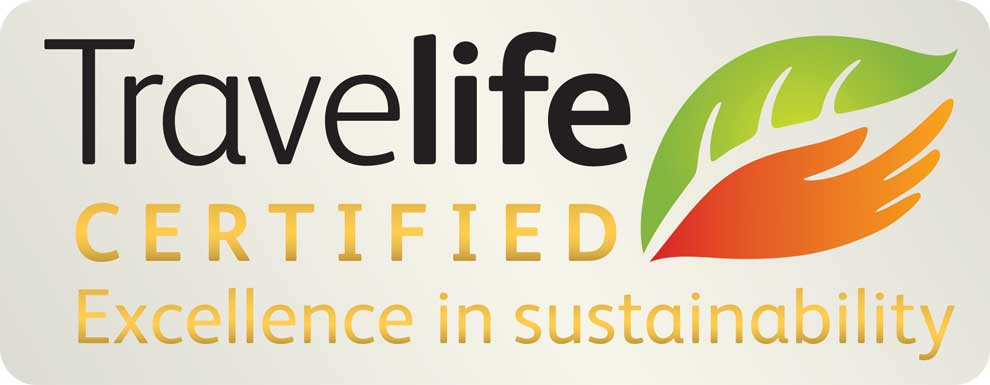
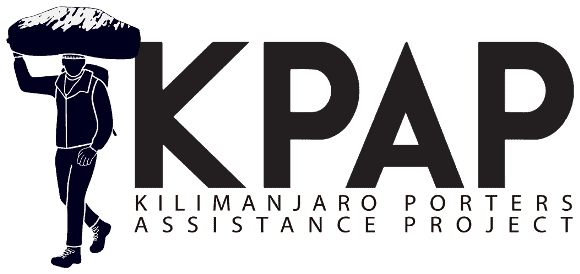
© Copyright Hike Kilimanjaro. All rights reserved.
